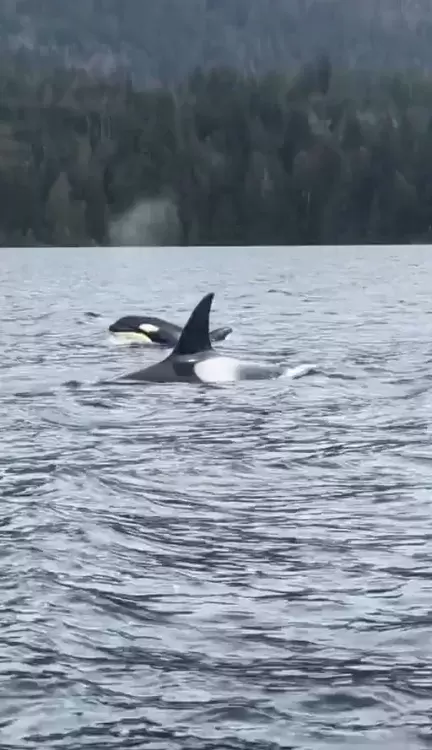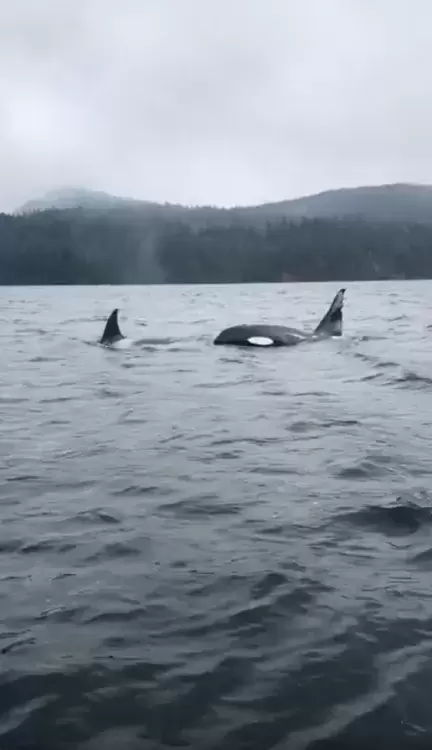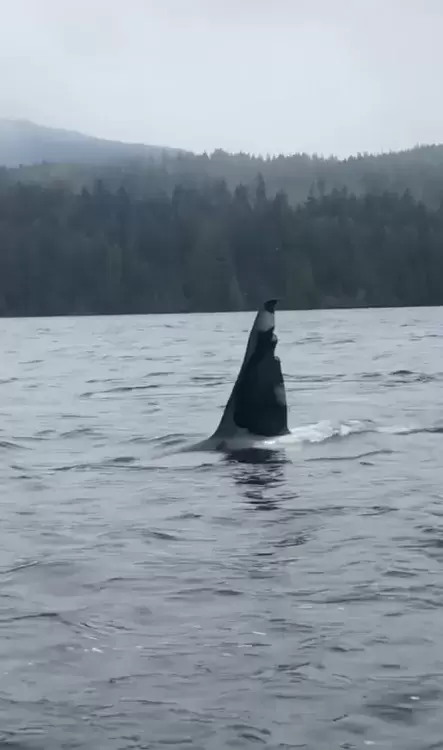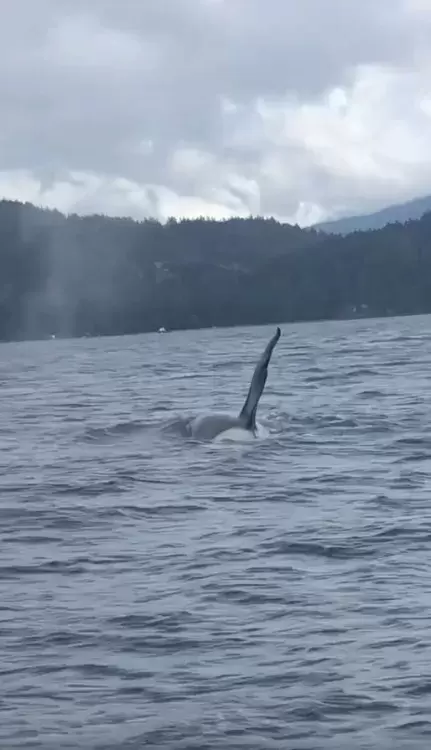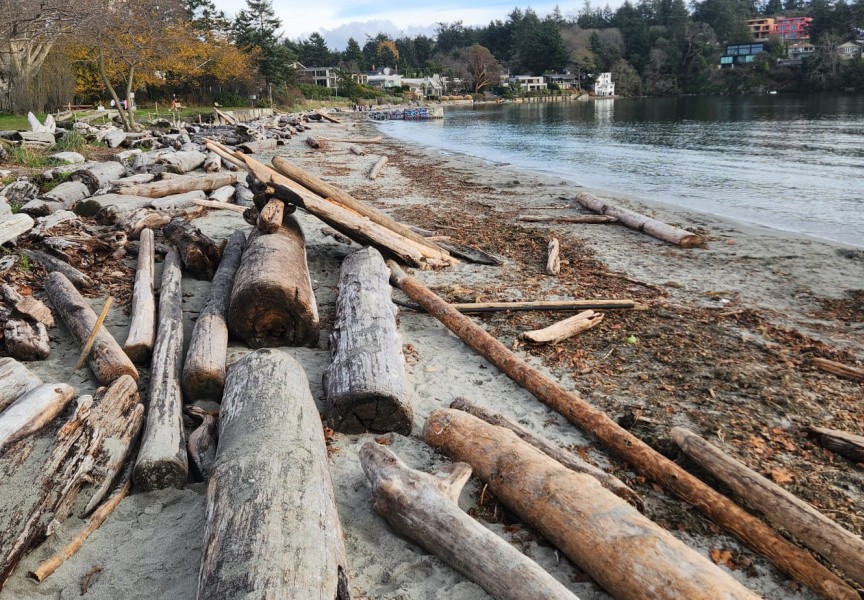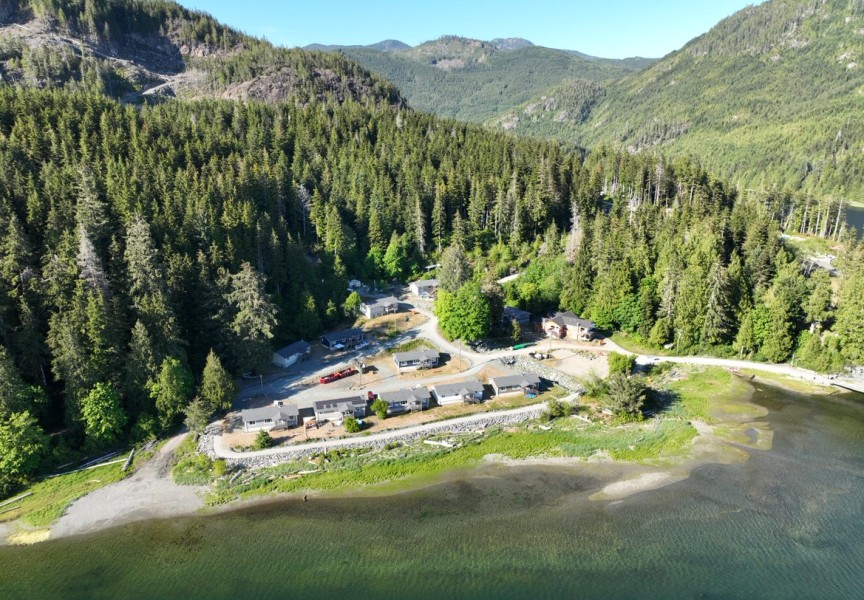For the Tseshaht beachkeepers, March 23 began when they met their supervisor down at the Port Alberni docks. They took two boats down the Alberni Inlet to Equis, where they had left Hemlock branches along a string of buoys with hopes to catch herring eggs. But with no luck they returned to Keith Island where they spent the remainder of the day.
Later on that day the crew decided to take their time on their way back home to Port Alberni. It was when they neared Nahmint Bay that they noticed sprays a few hundred metres ahead.
Initially the beachkeepers thought they were humpbacks, but when they saw orca fins breaching the water, excitement stirred.
Shane Sieber said there were about seven orcas.
“It’s not too often where you get to see a pod of orcas in the Alberni Canal,” said Sieber.
Sieber shared his excitement with family and friends by putting videos on Facebook. Promptly his online community was able to identify some of the members of the transient pod. The biggest give away was an orca named Chainsaw (T063).
Born in 1978, Chainsaw was named by the identifiable markings on his dorsal fin that resemble the shape of the motorized tool. It’s widely speculated that he received his famous markings in his youth from an animal like a sea lion.
His mother, Whidbey II (T065), born in 1968, was most likely present.
The Tseshaht beachkeepers were with the pod for roughly forty minutes from Nahmint Bay to Dunsmuir Point, across from China Creek. Sieber explains that they would breach, and then dive under. The crew would scan the distant surface until the pod would breach once again roughly 300 to 400 metres away from them.
It’s believed that the group are Bigg’s orcas, also commonly identified as transient killer whales. They’re known as the wolves of the sea for their stealthy hunting tactics, only staying in locations for brief durations and traveling up to 100 kilometres per day.
“Kakawin, killer whale, it represents a very strong [and] fearsome whale,” said Sieber,using the Nuu-chah-nulth name for the animal.
Unlike the Southern Resident killer whales, whose diet is primarily chinook salmon, Bigg’s are mammal hunters. Their diet includes harbour seals, harbour porpoises, steller and California sea lions, Dall’s porpoises, Pacific white-sided dolphin, and on occasion, other whales, according to the Georgia Strait Alliance.
Sieber said he received a report from his friend who sighted the pod in Uchucklesaht Inlet only an hour later. The following day Chainsaw and his pod were spotted near Ahousaht.
As a Tseshaht beachkeeper, Sieber often sees humpback whales, some gray whales, and eagles. He has often found trading beads throughout his years as a beachkeeper in the Broken Group Islands.
“It’s [an] amazing feeling to work out in our homelands,” said Sieber. “There's a certain type of energy you get when as soon as you enter the Broken Groups just knowing that's where our people come from.”

